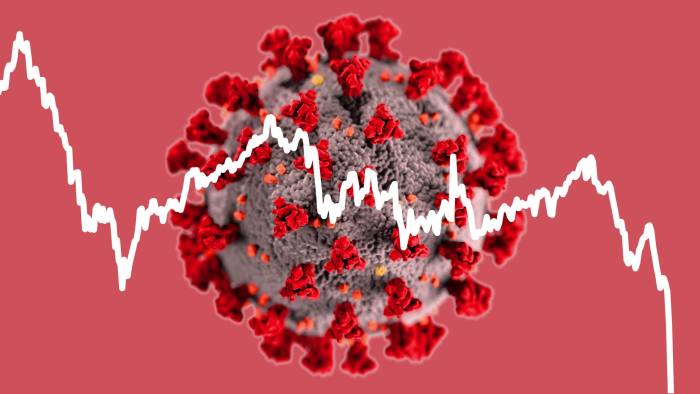Investors considering the coming decade can rely on one clear outcome from the great coronavirus shutdown: debt and plenty of it, with central banks bearing a significant amount of that burden.
The pandemic has triggered trillions of dollars in emergency spending. No one can quibble with governments trying to soften blows from shutdowns of economic activity. Nor can they argue with companies raising cash reserves so that they can bridge gaps in revenues to make it to the eventual restoration of business activity.
The result is a likely surge of 10 to 15 percentage points in the ratio of debt to economic output for many countries as they finance extra spending. This week, Moody’s estimated that the US government’s announced stimulus efforts “along with materially weaker revenues and growth” stand to propel the federal fiscal deficit from 4.6 per cent of gross domestic product last year to more than 15 per cent this year.
The legacy costs of fighting the virus, coupled with the biggest global economic contraction since the 1930s, will shape financial markets for much of the 2020s. Investors are on guard against so-called debt monetisation, where central banks enable unsustainable fiscal spending. In such an environment, expect gold to benefit and currencies to suffer.
Dean Turner, economist at UBS Global Wealth Management, argues investors should focus on three factors from here: a world of more debt, less globalisation and greater digitalisation.
“All economies will exit this crisis with much higher levels of debt, which will probably lead to a period of financial repression and higher taxation, both on corporations — and perhaps the digital economy in particular — and on personal wealth,” said Mr Turner.
With governments trying to narrow deficits, there is common ground among global policymakers for closing the loopholes in tax codes used by multinationals. A move to reduce the reliance on global supply chains following the crisis will also entail higher business costs, though some of those extra overheads may be offset by the greater use of automation, helping to preserve firms’ returns on capital.
All told, this suggests just modest growth and therefore limited upside for inflation, once the pandemic is finally behind us. Some observers anticipate that the recovery will emulate the path followed in the wake of the financial crisis: an initial economic rebound — where the more cyclical sectors of the stock market do well — but one that ultimately fades.
Much rests with the recent actions of central banks, which are buying government and corporate debt at a rapid pace. Some of the business support packages announced in recent weeks will sit heavily on public sector balance sheets, placing a further constraint on economic growth. Central banks will do their best to alleviate debt loads through asset-purchase programmes and low interest rates.
The balance sheets of the US Federal Reserve and the European Central Bank are currently north of $6tn and €5tn respectively. That is equivalent to about a 13 per cent share of the global economy, according to Unigestion. Expect that proportion to expand a lot further, as policymakers keep the borrowing costs of indebted countries and companies low for an extended period to allow growth to return.
Coronavirus business update

How is coronavirus taking its toll on markets, business, and our everyday lives and workplaces? Stay briefed with our coronavirus newsletter.
Sign up here
The hope is that an eventual and sustained recovery in economic activity will ease the debt burden over time. As seen after the last financial crisis, creating a robust recovery that includes rising consumer prices is tough when debt loads and demographics are already challenging. A bigger central bank presence in markets also limits efforts at normalising policy, given the sensitivity of asset prices to even a small rise in long-term interest rates.
Steven Blitz, economist at TS Lombard, reckons the “mammoth” deflationary forces of technology advances and ageing societies will intensify, offsetting loose monetary policy and the higher prices that will come as globalisation unwinds.
This should encourage investors to buy the shares of companies that are expanding quickly, and have pricing power for their goods and services, against a backdrop of slower economic growth.
James Paulsen, chief investment strategist at The Leuthold Group, says the most likely scenario is “another economic recovery with feeble growth, much like the last one”, held back by factors such as weak demographics. “This should keep the defensive nature of growth stocks in favour,” he adds.
The combination of extended bond-buying programmes and greater fiscal spending has helped absorb shockwaves from the virus’s hit to the global economy. Investors can breathe a little easier for now, but looking beyond the pandemic is difficult.
The prospect of a more indebted financial system, with increasing distortions that encourage market and sector herding, is unlikely to lead to a genuine and powerful economic upswing.



